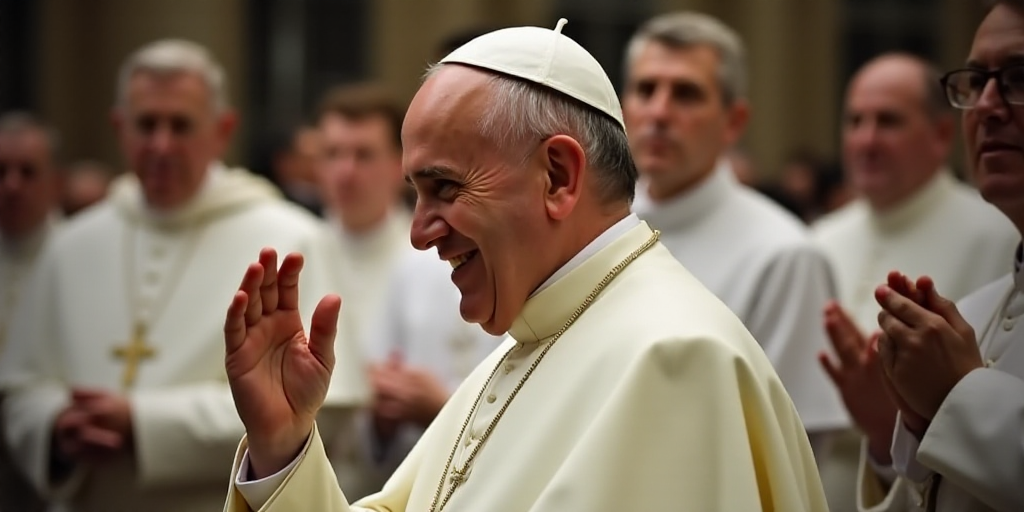The Funeral Procession
Pope Francis’ casket arrived at his final resting place, the Basilica of Santa Maria la Mayor in Rome, where he will be interred on Saturday after days of farewell ceremonies. This marks the first papal burial outside Vatican walls since Leo XIII in 1903, concluding a 12-year papacy marked by advocacy for migrants, the environment, and social justice.
The popemobile, a versatile white vehicle partially open-top, first traversed Rome’s streets past iconic landmarks like the Colosseum and Roman Forums, where thousands witnessed the funeral procession.
Global Recognition and Impact
World leaders, including Donald Trump, attended the funeral in St. Peter’s Square before 250,000 people. Cardinal Giovanni Battista Re praised Francis’ “innumerable” efforts in defending migrants and refugees from the Mediterranean to Mexico.
“He was a pope among the people with an open heart for all,” Re emphasized during his homily, highlighting Francis’ attention to “the last and the least” and marginalized individuals.
Despite criticizing U.S. immigration policies shortly before his death, Trump still commended Francis as a “fantastic” man who “loved the world.”
Francis’ advocacy for peace, especially in the context of Russia-Ukraine conflict, was also acknowledged by Re. The funeral served as a platform for discussions between Trump and Ukrainian President Volodymyr Zelenskyy in St. Peter’s Basilica.
Public Reaction and Tributes
Many faithful arrived early to secure a good spot at the funeral, expressing their admiration for Francis’ humanity and his transformative impact on the Church.
“He wasn’t just the pope; he embodied what it means to be human,” said Andrea Ugalde, a 39-year-old from Los Angeles. “He changed the Church… he defended the sick, homeless, poor, and animals.”
Among the crowd was Julian Assange, founder of WikiLeaks, accompanied by his family.
Over three days of lying-in-repose, 250,000 people paid their respects to the Argentine pope, with some waiting until late at night.
World leaders like Argentine President Javier Milei, Brazilian ex-president Luiz Inácio Lula da Silva, and Spain’s King Felipe VI and Queen Letizia traveled to Italy for the farewell.
Francis, who led 1.4 billion Catholics worldwide, died on April 21 at 88 due to a stroke, nearly a month after being discharged from a lengthy hospitalization for bilateral pneumonia.
Remembrance in Argentina
In Buenos Aires, a hundred young people gathered for a vigil at Plaza de Mayo, singing and lighting candles until the funeral’s start at 5 a.m.
“The vigil aims to claim the pope’s legacy, transforming the sadness of his departure into a beacon of hope,” said Iara Amado, a 25-year-old social worker.
Santa Maria la Mayor, Francis’ final home, is 11,000 km from his native Flores neighborhood.
For the transfer, the Italian government established a no-fly zone over Rome and deployed anti-drone units, snipers on rooftops, and combat aircraft ready for takeoff.
Despite this security, his tomb will remain simple: made of marble from northern Italy, where his family originated, with “Franciscus” as the sole inscription.
“A Simple Pastor”
Jorge Mario Bergoglio chose his papal name in honor of St. Francis of Assisi, the saint of the poor, when elected on March 13, 2013.
The 266th pope brought an austere style “from the ends of the earth,” choosing a modest apartment instead of the lavish Apostolic Palace and inviting homeless and prisoners to his table.
“He was a simple pastor, much loved in his archdiocese, who traveled everywhere, even by metro and bus… because he felt like one of the people,” reads the Rogito, an official obituary reviewing his life.
This was placed in his wooden coffin, covered with zinc and wood plates bearing a cross, along with his black shoes and ever-present rosary.
His reformist legacy includes combating clergy abuse and advocating for greater roles for women and laity, though he faced stern opposition from conservative elements within the institution.
Francis’ farewell paves the way for his successor’s election. The conclave to choose him must be convened between 15 and 20 days after his death, though cardinals could initiate it sooner on an unspecified date.






